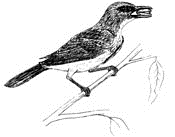Vertebrate Pest Conference: Proceedings

Vertebrate Pest Conference Proceedings: 17th (1996)
Date of this Version
1996
Document Type
Article
Citation
Published in Proceedings: Seventeenth Vertebrate Pest Conference … 1996, ed. Robert M. Timm & A. Charles Crabb (University of California, Davis, 1996).
Abstract
Zinc phosphide (Zn3P2, CAS #1314-84-7) is an acute rodenticide having numerous agricultural applications. This paper estimates the risk of mortality posed to domestic cats (Felis domesticus) and dogs (Canis familiaris) from ingestion of voles (Microtus spp.) that succumb to 2.0% Zn3P2 baits. Following a brief review of direct/indirect studies and incident reports relevant to nontarget-Zn3P2 effects and vole control, four scenarios of volecarcass ingestions needed for light and heavy cat and dog predators/scavengers to receive approximate lethal doses (ALDs = 40 mg/kg) of undigested rodenticide are described. Scenarios were derived using values reported by Sterner and Mauldin (1995) as the maximum 8.2 mg Zn3P2 ingested (ad libitum) and average 1.7 mg Zn3P2 whole-carcass residue. Extrapolating these "worst-case" loads to 2 and 6 kg cats and 1 and 36 kg dogs showed that between 5 and 847 Zn3P2-baited vole carcasses must be consumed in fairly rapid succession for these non-targets to ingest cumulative ALDs. The likelihood that even light (≤ 1-2 kg) cats and dogs will find and rapidly (≤24 h) ingest multiple (≥5) Zn3P2-dosed vole carcasses under registered applications seems remote.
Included in
Animal Sciences Commons, Bioresource and Agricultural Engineering Commons, Environmental Engineering Commons


Comments
Copyright © 1996 (where applicable) by the Vertebrate Pest Council of the Vertebrate Pest Conference. Used by permission.